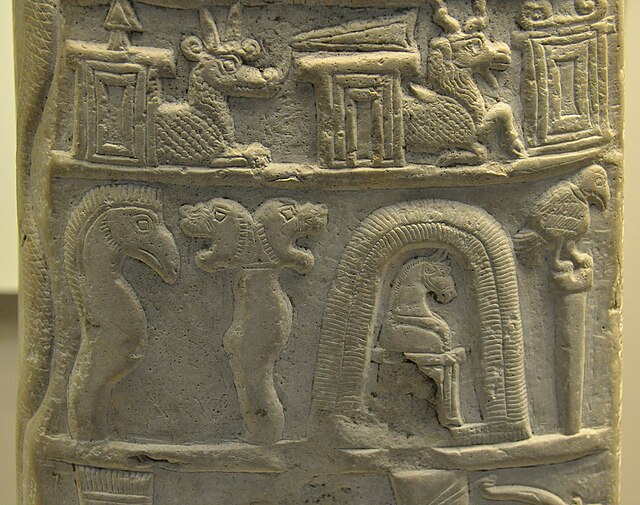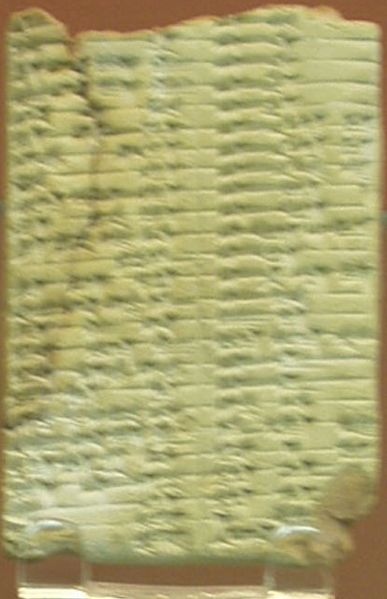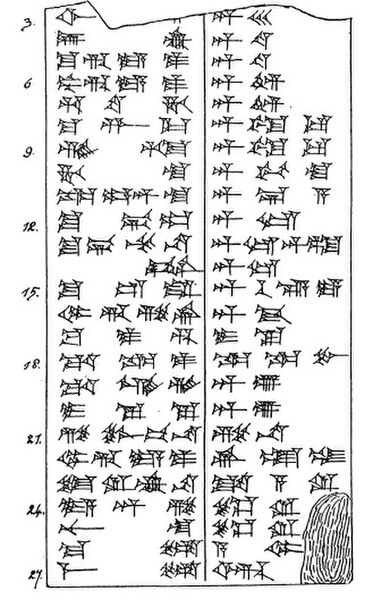Kassite deities were the pantheon of the Kassites, a group inhabiting parts of modern Iraq, as well as Iran and Syria, in the second and first millennia BCE. A dynasty of Kassite origin ruled Babylonia starting with the fifteenth century BCE. Kassites spoke the Kassite language, known from references in Mesopotamian sources. Many of the known Kassite words are names of Kassite deities. Around twenty have been identified so far. The evidence of their cult is limited, and only two of them, Šuqamuna and Šumaliya, are known to have had a temple. Other well attested Kassite deities include the presumed head god Ḫarbe, the weather god Buriaš, the sun god Saḫ and the deified mountain Kamulla.
Detail from a kudurru of Ritti-Marduk, from Sippar, Iraq, 1125-1104 BCE. A perching bird, symbol of Šuqamuna and Šumaliya, can be seen at the lower right. British Museum.
Tablet with a Kassite-Akkadian vocabulary (ca. 1200-800 BCE). British Museum.
T. G. Pinches' drawing showing the cuneiform writing of the names of Kassite gods and their Babylonian equivalents.
Part of the front of the Eanna temple. Vorderasiatisches Museum Berlin.
The Kassites were people of the ancient Near East, who controlled Babylonia after the fall of the Old Babylonian Empire c. 1531 BC and until c. 1155 BC.
Cylinder seal of Kassite king Kurigalzu II (c. 1332–1308 BC). Louvre Museum AOD 105
Kassite Kudurru stele of Kassite king Marduk-apla-iddina I. Louvre Museum.
Kassite cylinder seal, c. 16th–12th century BC.
Kassite king Meli-Shipak II on a kudurru land grant presenting his daughter Ḫunnubat-Nanaya to the goddess Nanaya (pictured enthroned). The eight-pointed star seen above was Inanna-Ishtar's most common symbol. Here it is shown alongside the solar disk of her brother Shamash (Sumerian Utu) and the crescent moon of her father Sin (Sumerian Nanna) on a boundary stone of Meli-Shipak II, dating to the twelfth century BC.








